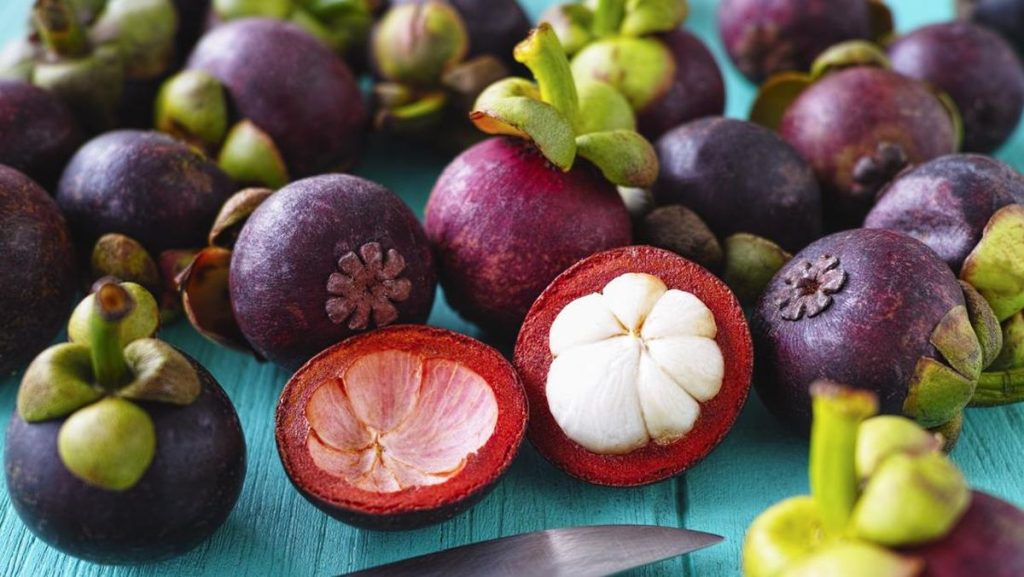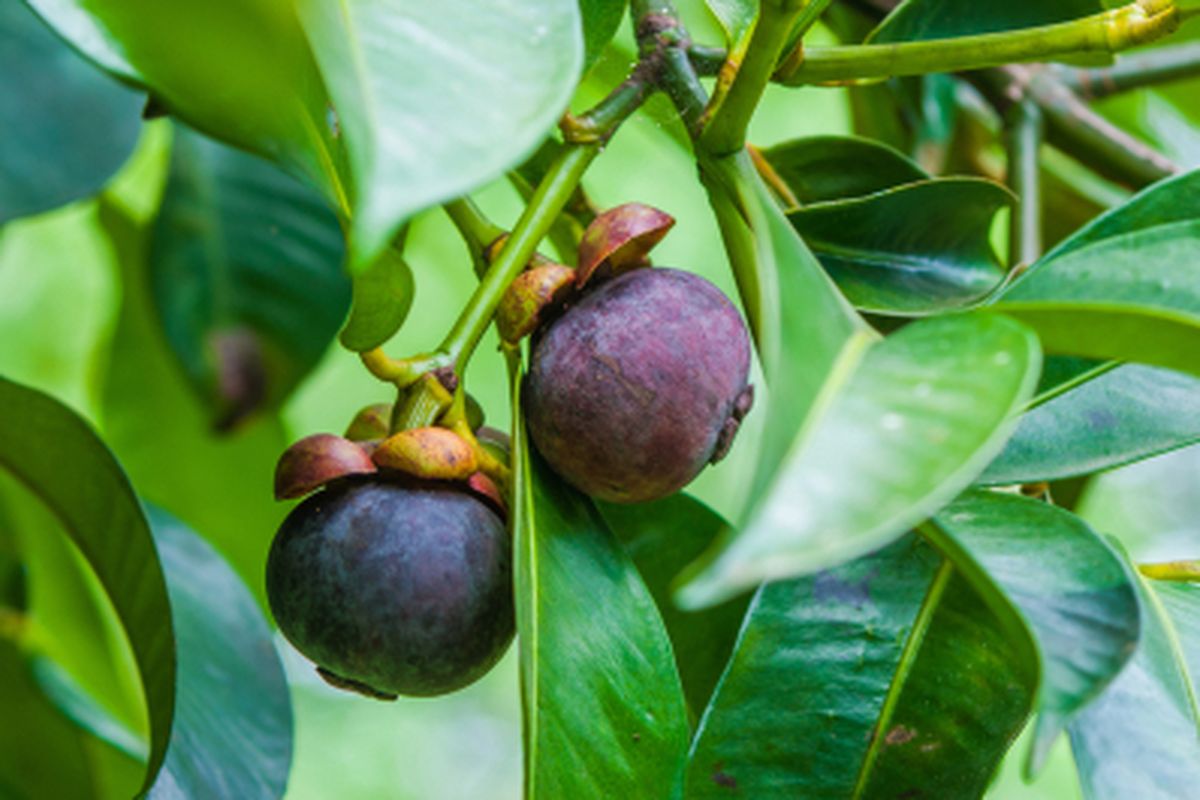Mangosteen, often heralded as the “Queen of Fruits,” stands as a tropical gem originating from Southeast Asia. Beloved for its exquisite balance of sweetness and tanginess, this fruit has captivated taste buds across the world. Encased in a striking purple rind, mangosteen boasts a pearly white interior that delivers not only a delightful culinary experience but also a wealth of health benefits. Its unique appearance, flavor, and nutritional value make it one of the most treasured fruits in tropical agriculture.
A Peek into Mangosteen’s Origins
The history of mangosteen is deeply intertwined with the lush landscapes of Southeast Asia, particularly Indonesia, Thailand, and the Philippines. Mangosteen trees thrive in the humid and fertile tropical climates, requiring specific environmental conditions to flourish. These trees are a testament to patience, taking several years to bear their first fruit. Despite this, their yields are highly valued, making mangosteen a prized commodity in both domestic and international markets.
Historically, mangosteen’s allure wasn’t confined to its local region. During the colonial era, explorers and traders introduced this exotic fruit to various corners of the world, including Europe and the Americas. Its rarity and exotic nature earned it a reputation as a luxury, consumed by royalty and aristocrats. Hence, its regal title as the “Queen of Fruits” perfectly complements its historical significance.
Flavor and Culinary Versatility
What sets mangosteen apart from other fruits is its unparalleled flavor profile. The creamy, juicy white flesh exudes a perfect blend of sweetness with subtle tangy notes that leave a refreshing aftertaste. Its flavor has been compared to a mixture of peach, strawberry, and lychee, with a unique twist that’s hard to replicate.
Mangosteen’s versatility extends to various culinary applications. Beyond being consumed fresh as a snack, it is a popular ingredient in desserts, smoothies, and juices. In Southeast Asia, mangosteen is also incorporated into traditional dishes, adding depth and sweetness to savory recipes. Furthermore, mangosteen syrup and jams are cherished as premium products that retain the fruit’s signature flavor.
Nutritional Powerhouse
Mangosteen is not just a treat for the palate; it is also a nutritional powerhouse. The fruit is rich in essential vitamins and minerals, including vitamin C, potassium, and dietary fiber. These nutrients contribute to its reputation as a health-enhancing fruit.
However, what truly sets mangosteen apart is its high concentration of xanthones—natural compounds with potent antioxidant properties. Xanthones have been studied for their potential to combat oxidative stress, reduce inflammation, and promote overall cellular health. Consuming mangosteen regularly is believed to bolster the immune system, improve skin health, and support heart health.
The Role of Mangosteen in Traditional Medicine
For centuries, mangosteen has been revered in traditional medicine practices across Asia. The rind of the fruit, in particular, has been utilized for its medicinal properties. Often dried and ground into a powder, mangosteen rind is used to treat various ailments, ranging from diarrhea to skin conditions.
In modern times, scientific studies have sought to validate the health claims surrounding mangosteen. While research is still ongoing, preliminary findings suggest that the antioxidants and other bioactive compounds in mangosteen hold promise for therapeutic applications.
Cultivation and Harvesting
Growing mangosteen is an art that requires meticulous care and attention. The trees are sensitive to their environment, demanding consistent rainfall, high humidity, and fertile soil. Farmers often adopt sustainable cultivation practices to ensure the longevity and health of the trees.
Harvesting mangosteen is a delicate process. The fruit is handpicked to prevent damage to its outer rind, ensuring that the inner flesh remains pristine. This careful handling contributes to the fruit’s premium status in the market.
Mangosteen in Global Markets
Over the years, mangosteen has gained prominence as a highly sought-after fruit in international markets. Its export has opened up opportunities for farmers in tropical regions to share this exotic treasure with the world. Countries like Indonesia, Thailand, and Malaysia are among the leading exporters of mangosteen.
In global markets, mangosteen is celebrated for its exclusivity and is often positioned as a luxury fruit. This status is reflected in its price, which can be higher than that of other fruits. However, its unmatched flavor and health benefits make it a worthwhile indulgence for many consumers.

Challenges in Mangosteen Trade
Despite its popularity, mangosteen trade faces certain challenges. The fruit’s delicate nature and relatively short shelf life require efficient cold storage and transportation systems to maintain its quality during export. Moreover, mangosteen is subject to strict import regulations in some countries due to concerns about pests and diseases.
Addressing these challenges requires collaboration among farmers, exporters, and regulatory bodies. Advancements in post-harvest technology, such as improved packaging and cold chain logistics, play a crucial role in overcoming these hurdles.
The Symbolism of Mangosteen
Beyond its culinary and nutritional value, mangosteen holds cultural and symbolic significance in many parts of Southeast Asia. The fruit is often associated with prosperity, health, and fertility, making it a popular choice for festive occasions and traditional ceremonies. Its regal purple rind and pristine white flesh are seen as representations of purity and luxury.
Mangosteen in Modern Trends
In recent years, mangosteen has found its place in the wellness and beauty industries. Its antioxidant-rich properties have made it a popular ingredient in skincare products, where it is celebrated for its potential to rejuvenate and protect the skin. Mangosteen-infused beverages and supplements have also gained traction among health-conscious consumers.
Additionally, mangosteen’s unique flavor has inspired chefs and food artisans to experiment with it in innovative ways. From artisanal chocolates to exotic cocktails, mangosteen continues to inspire creativity in the culinary world.
Sustainability and the Future of Mangosteen
As demand for mangosteen continues to grow, ensuring sustainable production practices becomes increasingly important. Farmers are encouraged to adopt eco-friendly methods, such as organic farming and biodiversity preservation, to protect the delicate ecosystems in which mangosteen thrives.
Investments in research and development are also essential to address challenges in cultivation, harvesting, and trade. By embracing innovation, the mangosteen industry can expand its reach while preserving the quality and authenticity of this beloved fruit.
In conclusion, mangosteen is more than just a fruit; it is a symbol of tropical abundance and a testament to the richness of Southeast Asia’s natural resources. From its luscious flavor to its impressive health benefits, mangosteen continues to enchant the world. As we celebrate this Queen of Fruits, we also recognize the dedication of farmers and communities who make it possible for us to enjoy its unparalleled goodness.
